Unless you are a dyed-in-the-wool watch enthusiast, you may never notice the subtle motion of a dead beat second hand.
However, the true watch enthusiast is likely to instantly note the insistent jump of a séconde morte from a mile away – though in theory it would be easy to mistake for the second hand of a quartz watch, which moves in a similar fashion.
Rather than appearing to continue along its route around the circumference of the dial smoothly, the dead beat complication is clearly visible because the second hand makes a small jump from one second marker to the next.
The dead beat escapement was invented in 1675 by astronomer Richard Towneley, who had noticed that the second hand of pendulum clocks with an anchor escapement recoiled backwards slightly, resulting in inaccurate measurements. Towneley’s invention, the first dead beat escapement, eliminated the recoil.
The new escapement was significantly more accurate than the anchor escapement. It was widely introduced by English clockmaker George Graham around 1715, and by the nineteenth century the dead beat escapement had become the standard for high-quality pendulum clocks.
Because the dead beat escapement resulted in a second hand that stepped in full seconds, the conspicuous motion of the second hand became synonymous with high precision.
In modern times
The dead beat seconds complication in a modern wristwatch was developed to allow the second hand to move in the same way as that of a traditional high-precision clock. “Jumping seconds” was, and remains, indicative of a precious timepiece – even if it is rarely seen today.
It is, in fact, a truly uncommon addition to a watch movement in the modern age.
However, the dead beat seconds complication is the main focus of Jaquet Droz’s new automatic Caliber 2695SMR. And its modern raison d’être – aside from the technical novelty factor – is to demonstrate on a silver platter (or an enamel platter in this case) just how precise the manufacturer claims its watch to be.
Precision is easily discerned by the abrupt motion of the dead beat second hand, which is positioned as a sweep second hand, practically regulator style, over the smaller subdial containing the hours and minutes and the much larger subdial displaying the date, both of which together form the infinite “eight” of a Jaquet Droz Grande Seconde model.
The result is quite hypnotic: as the eye follows the revolution of the golden second hand making its little jumps around the grand feu enamel dial, one cannot help but be mesmerized.
A new family of Deadbeat models
The Grande Seconde Deadbeat is the progenitor of a whole new family of models at Jaquet Droz. Which means that Caliber 2695SMR is now the base movement destined for use in a line of future watches.
This makes the considerable investment into the automatic movement’s research and development that much more worthwhile.
Characterized by rhodium-plated plates and bridges decorated with côtes soleillées, the beating heart of the extremely aesthetic movement is crafted using a silicon balance spring.
Topped off by a skeletonized 18-karat red gold rotor, the view through the sapphire crystal case back has at least as much charming appeal as the front.
For more information, please visit www.jaquet-droz.com/grande-seconde-deadbeat.
Quick Facts
Case: 43 x 13.79 mm, red gold
Movement: automatic Caliber 2695SMR with dead beat seconds and silicon balance spring; 40 hours power reserve; 21,600 vph
Functions: hours, minutes (subdial at 12 o’clock), seconds (sweep hand); date
Limitation: 88 pieces
Price: 29,000 Swiss francs without VAT





















































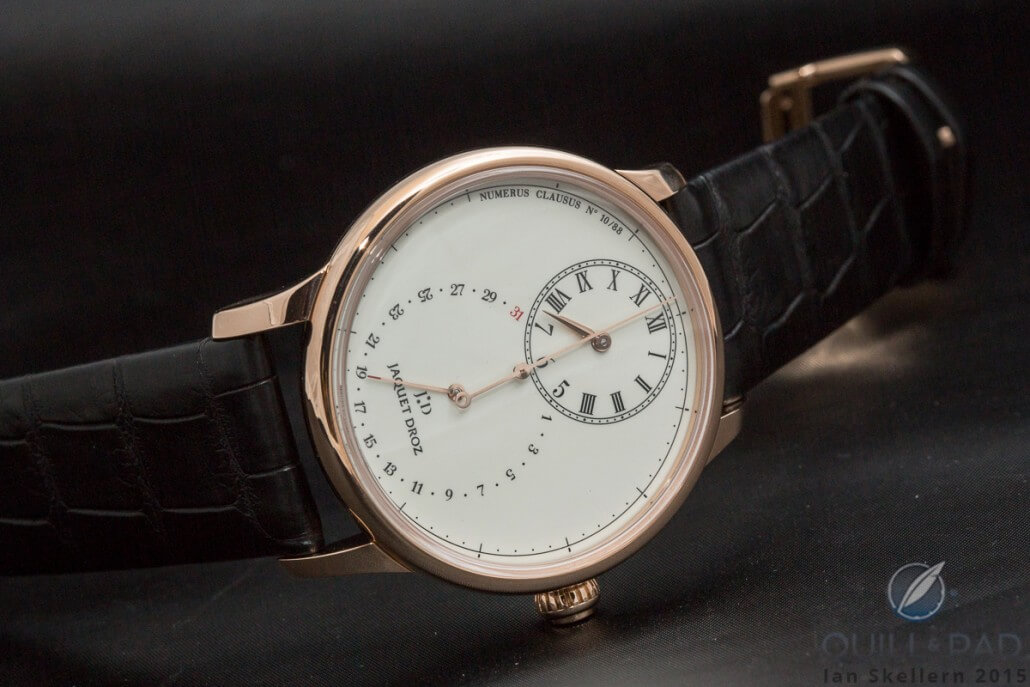
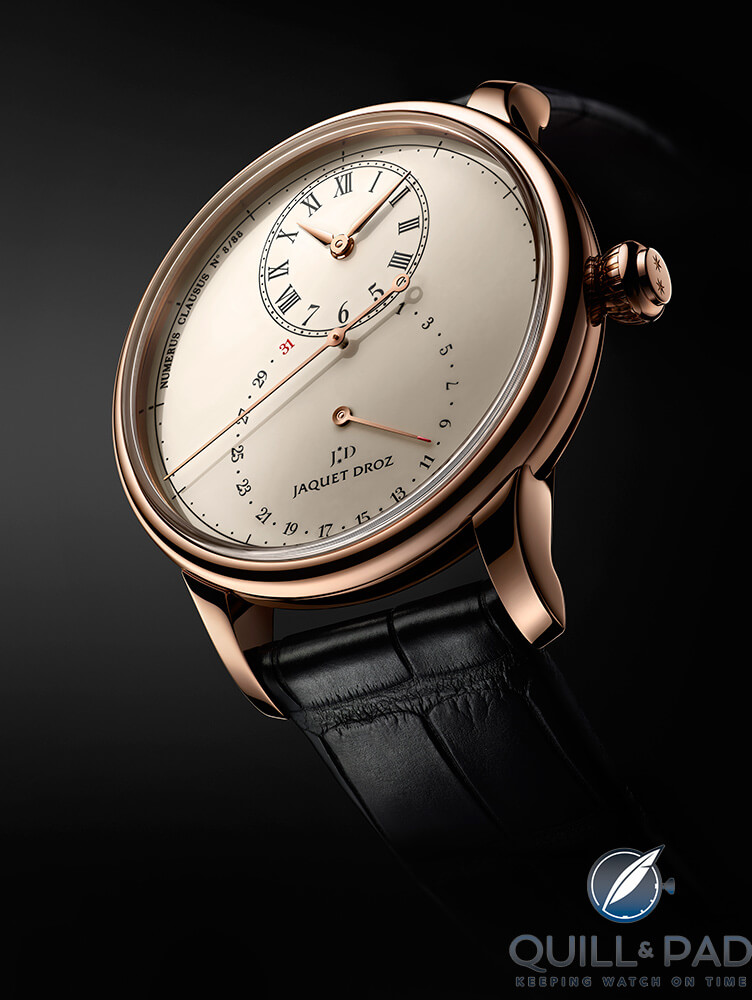
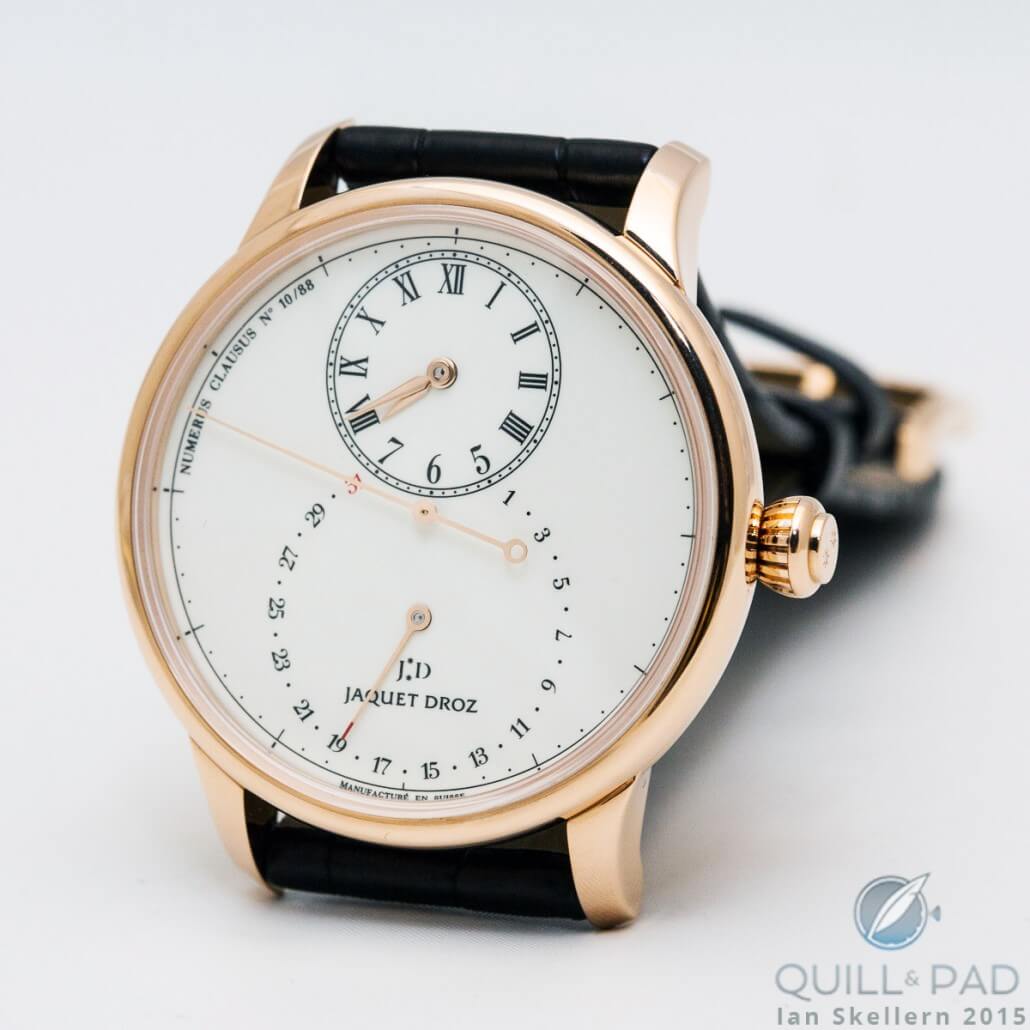
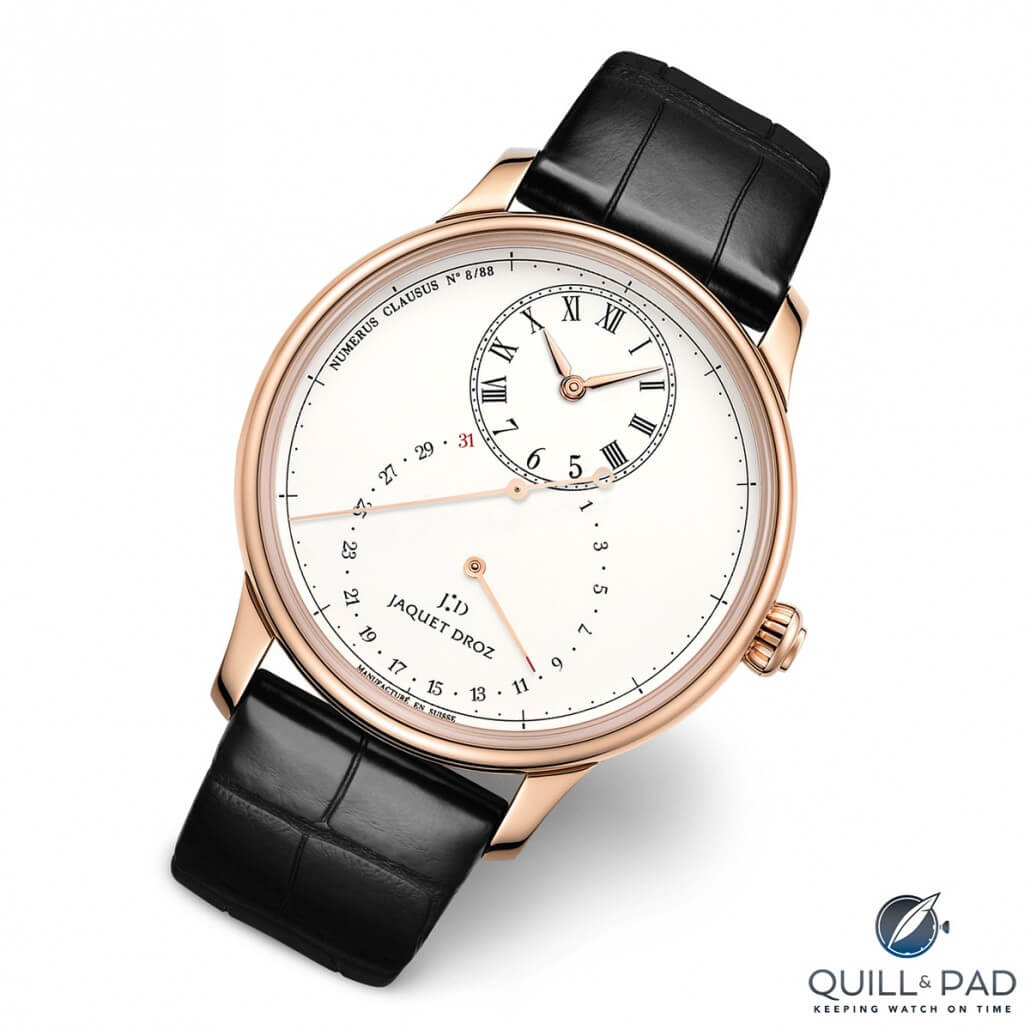
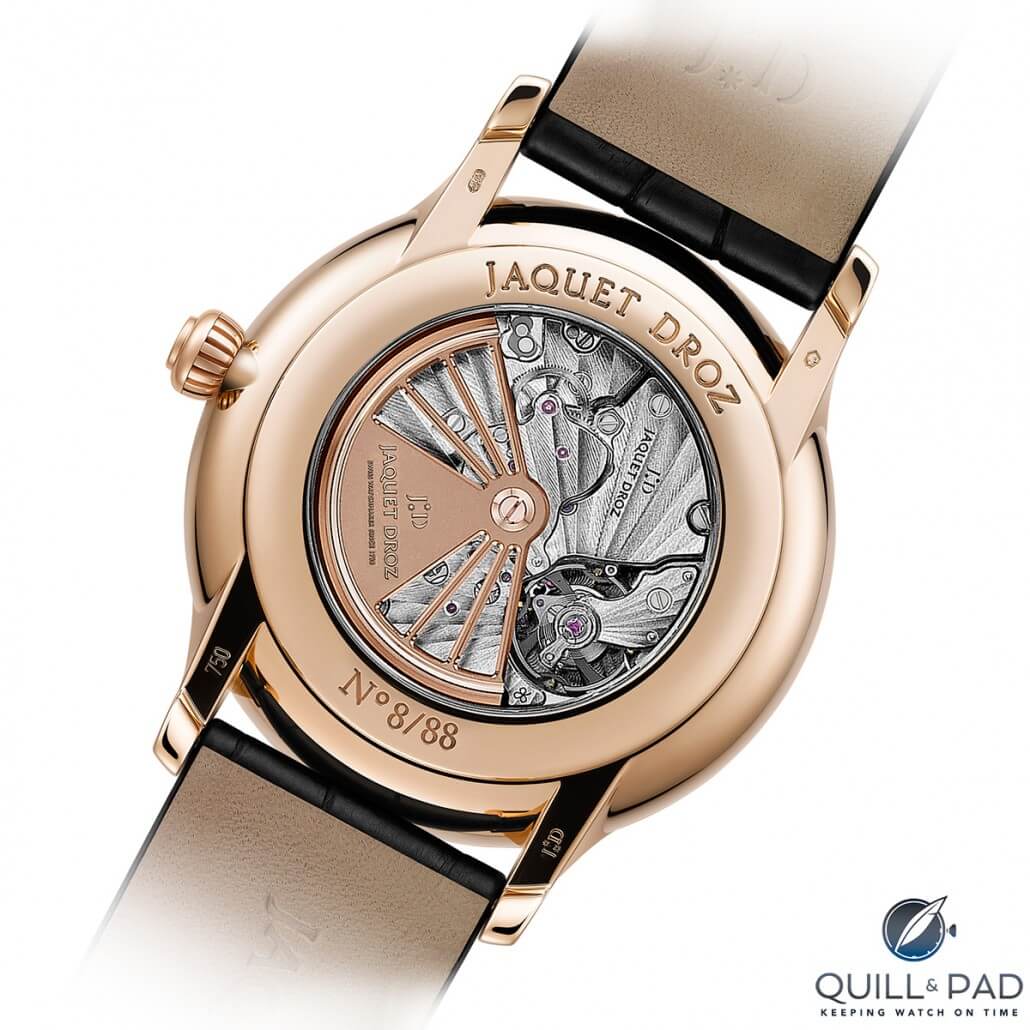
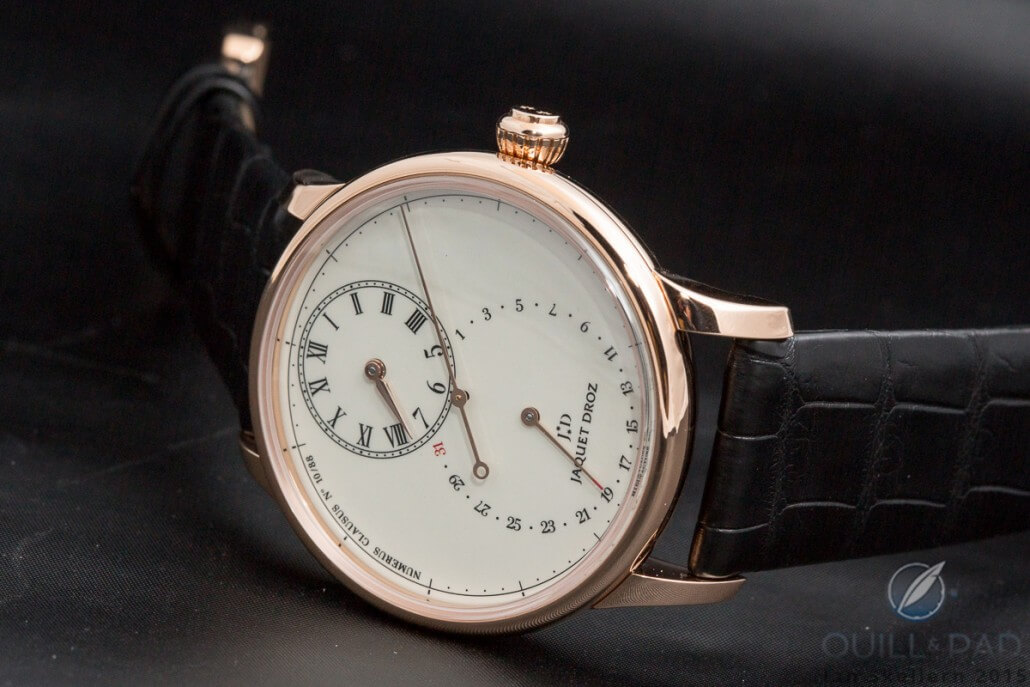
Leave a Reply
Want to join the discussion?Feel free to contribute!